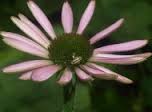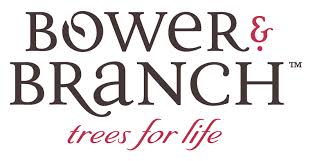I write a lot of plant descriptions. It used to be a slow, tedious process, but over time I’ve learned exactly where to go to find the information I need, and that has made my job a lot easier. Allow me to share some of my favorite web sources for plant information:
Missouri Botanic Garden Plant Finder
If you do an internet search for a plant, chances are pretty good that the Missouri Botanical Garden site will show up on page 1. And with good reason. You’ll find excellent information here. Keep in mind that bloom times are for St. Louis (zone 6b).
MBG’s name pronouncer feature is a wonderful new addition. To try it out, click on this link and then click on the speaker icon after the plant name. Have you been mispronouncing Podophyllum all this time? Thought so.
This site is owned by 3 Portlander friends of mine and is a treasure trove of plant information and photos. I believe they have something like 30,000 listings and 76 vendors, so you not only get great information on a ton of plants, but you can also find out where to buy the plant you’re lusting after.
For each plant, you can see different vendors’ catalog descriptions side-by-side, which sometimes conflict with each other, reminding me of a quote I read in OMNI magazine when I was about 12 which has always stayed with me: “A man with one watch knows what time it is; a man with two watches isn’t so sure.”—Anonymous.
Plant lust’s offerings are skewed towards the Pacific Northwest, but many mail-order vendors are included as well, so lusting gardeners all over the country can join in on the fun.
Sometimes it’s really hard to find information on newly introduced plants. If they’re patented, though, you can at least access the patent application and glean some info there.
How do you know if a plant is patented? If it is, it will say so on the tag. If you don’t have the tag, google the plant’s name and look for a patent number (often preceded by “PP”) or a patent name, which is often a nonsense word in single quotes.
For example, a Google search for J. Frank Schmidt’s new Crimson Sunset maple should lead you to this pdf, which gives the patent number (PP21838) and patent name (‘JFS-KW202’) for Crimson Sunset. If you enter either of these codes into the Free Patents Online search box, you will pull up the tree’s patent application and you can read about its background information there.
Sometimes the patent name will be the same as the plant’s name in the trade, and you can just enter the more familiar name, such as in the case of Coreopsis ‘Full Moon’.
This is sort of like Yelp for plants. Gardeners weigh in with their experiences—positive, neutral, or negative—with a particular species or cultivar, and voice their opinions in detail. They give their location and zone, too, so you know if their climate is similar to your own.
The descriptions are entertaining as well as truly helpful, though you have to take them with a grain of salt because most of the contributors are amateur gardeners. Not to put down the novices, but there are instances where the reviewer has clearly misidentified the plant and is ranting about something else entirely.
The Garden of Paghat the Rat-girl
Paghat the Rat-girl is the Queen of Plant Descriptions. She profiles an extensive array of plants in her Seattle-area garden, describing in loving detail their cyclical rhythms from emergence in spring to their return to dormancy in winter.
She conveys their preferences and all pertinent growing information while also weaving poetry, art, photos, history, literature, folklore, and mythology into the descriptions to tell the plants’ stories and the stories behind their names. Her passion and breadth of knowledge is amazing.
Longwood Gardens Plant Explorer
(Bloom times)
This is a neat site if you’re searching for bloom time information. You’ve probably never heard of it because it’s sort of hidden away on the Longwood Gardens site, but you can access it directly by clicking on the link above.
To get an idea of how extensive their bloom time info is, this is what you’ll see if you search for Liatris spicata ‘Kobold’. You’ll have to scroll down to see the records, which extend back to 1999. Nice, huh? Longwood is in Kennett Square, PA (zone 6b).
Plant Delights is a fantastic mail-order nursery in North Carolina that specializes in uncommon perennials. Don’t let the corny jokes peppered throughout the catalog fool you—Tony Avent knows his stuff and there’s a wealth of reliable information here.
There are also in-depth articles on many perennial-related subjects to be found; they are somewhat hidden from view on the site, but you can view a list of them here.
Plant Delights has a 28-acre botanic garden there in Raleigh in which to trial their offerings. If you live in a hot and humid climate, you know that Plant Delights feels your pain and is testing their plants for those conditions.
There’s a sizable collection of plant portraits here that Rob has assembled based on his personal experience in growing them in his Pennsylvania garden. Nice photos, solid information, and he allows readers’ comments, which can add more layers to the information he gives.
Not sure if it’s Aster or Symphyotrichum, Dicentra or Lamprocapnos, Eupatorium or Eutrochium? Enter the genus and species in the search box, and this site will tell you if it’s the accepted name or a synonym for the newer correct name.
Since there is no One True Authority on plant names, it’s all debatable, but this site is endorsed by Kew, the Missouri Botanical Garden, and the New York Botanical Garden, and that’s good enough for me.
Be prepared for some surprises. Good old Centaurea montana is now Cyanus montanus, Lychnis coronaria is now Silene coronaria. And you don’t even want to know what they did to Podophyllum.
San Marcos Growers in Santa Barbara, CA is strictly wholesale and doesn’t sell to the public, but anyone can access their fabulous catalog descriptions. Just good, solid, no-nonsense info here on a huge number of plants, both common and uncommon. You’ll find all the stats and growing tips you’ll need, plus sometimes they delve into the history of the plant or how it got its name.
North Creek Nurseries in Landenberg, PA is also strictly wholesale to the trade only, but they have a great catalog featuring grasses and perennials, with an emphasis on Eastern U.S. natives. They have started to do the plant lust thing and list multiple descriptions of the plants from different sources, and it’s interesting to compare the various accounts.
If you haven’t heard of Bower & Branch and you’re in the eastern U.S., you’ll be hearing a lot more about it soon. Bower & Branch is a new tree brand that ships container trees to participating independent garden centers (NO BOX STORES) across the region.
Their focus is on enabling customers to succeed with trees, and they put their money where their mouth is with a 3-year guarantee. Their website is an important tool in that mission.
Ok, so I’m a little biased here. Many of B & B’s tree descriptions are penned by yours truly. But this website is a great resource for tree information and it will only get better as we add new tree profiles, new articles about trees, more photos, and a search feature.
Have I forgotten any indispensable sites? What are your go-to websites for plant descriptions?













Good list. One of my indispensable Go To’s for the PNW that you left out is Debbie Teashon’s Rainy Side Gardeners, here: http://www.rainyside.com/
Ah, yes. Good one. Also Great Plant Picks for PNW gardeners.
Prairie Moon Nursery
Prairie Nursery
Lady Bird Johnson Wildflower Center
I use Prairie Nursery’s site a lot for info on germinating seeds. For general wildflower descriptions I like Illinois Wildflowers the best, though the others you mention are excellent as well.
Thank you for including Plant Lust. 🙂 … For the word nerd among us, (me) and for poetic prose, I enjoy the plant descriptions on the Digging Dog Nursery website. Here is a sentence taken from a white Alstroemeria they’re selling: “…a wash of yellow sets off cinnabar dashes while outside, a pale swath of pink highlights light green streaks.” Educational as well as entertaining. Great post.
Yes to Digging Dog! I was *this* close to including them. I love that they don’t just repeat the same old stuff, but really put some passion and creativity into their descriptions.
Great list and I love your “two watches” quote. So true. I love seeing the conflicting info right next to each other, it reminds me that plants aren’t an exact science.
Also glad you included San Marcos Growers, their website is super helpful to me.
Isn’t that a great quote? I’ve been waiting 31 years to use that. A lot of the San Marcos plants are a little too spiky for me, but they have salvias galore and lots of other West Coast loving goodies.
I have to echo Loree and say that your “two watches” quote is so true. I’m always so happy when researching plants and Missouri Botanical Garden or San Marcos Growers is available, they’re terrific. There are some in here that are new to me, so I’ll have to check them out. Thanks!
Of course plant lust is always my first choice if it is a plant I want for my own garden! Keep up the good work and thanks for commenting, Megan.
What a great list! I love Paghat! She inspired me more than I could ever relay. She made plant love elegant, informative, and oh, so enriching!
As the garden supervisor and programs coordinator at Plant Delights Nursery at Juniper Level Botanic Garden, in Raleigh, NC, I fully endorse this list. It continues to shape me, and obviously shaped you, as well. Thank you for the compilation, and your thoughts on the matter.
—Keith
Paghat has a donation option on her site, and I really ought to kick in. It would be such a loss to not have that rich source of information and inspiration at our disposal.
You must love your job! PDN is such a great nursery. Thank you for taking the time to comment.
Great list! I’ve used most of these, myself. You know you can actually go straight to the source for patents at this website: http://www.uspto.gov/
You can search for patents or patent applications by following the “Search for Patents” link, and you can also look up registered trademarks in the Trademark Database.
In regards to names, I’m a bit of a Nazi, so please permit me to clarify something. I’m sure you understand the distinction, but your wording seems like it could confuse the issue for others. The name on the patent is the actual cultivar name, not a “patent name” as you call it, even if it’s just a few letters and numbers. When people bother to give a plant a sensible cultivar name using real words, they usually sell it under the same name. If that plant is sold under another name, it is just a marketing name or trademark, and isn’t even truly connected to that plant, but owned by a person or company. The owner of the trademark could sell a completely different plant under the same name. Catalog descriptions and labels are technically supposed to include both trade name and cultivar name (with only the latter in single quotes) but even when that happens, the cultivar name is tiny. More frequently, whoever writes those descriptions or labels doesn’t understand the basic rules of plant naming, or doesn’t care, and omits the cultivar name, often placing the trade name in single quotes, thus adding to public confusion. I’ll spare you my rant on shady marketing tactics involving trademark names.
Thanks for the shortcut to the patents website. I think I always knew it existed, but fpo is what I stumbled upon first, so I’ve just stuck with it.
Yes, my description of “patent names” was oversimplified and not exactly accurate. I talk about patents more in another post, http://amycampion.com/what-are-plant-patents-trademarks-and-brands/, though that probably contains some oversimplifications, too. It’s VERY confusing for people who aren’t hard-core plant nerds like us, so some details are lost in translation. I have a link to Tony Avent’s rant on trademark names in that post, which you’re probably familiar with. That rant was from awhile ago, I would be curious to know Tony’s current stance. I agreed with him when I first read it, but now I just think the rules have been flaunted so many times that it really doesn’t matter anymore. We can’t fight it and there isn’t much point in getting worked up about it imho. If you’ll look at the latest wording of the ICNCP, they seem to have knuckled under. Or perhaps I’m reading it wrong. Thanks for commenting, Evan.
No, you’re probably right. Since the ICNCP doesn’t really have any power (it’s not like they could hire mercenaries to police plant names) so they have probably knuckled under. I’ve simmered down from irate to resigned over the matter. But I’m still going to explain the difference between a real cultivar name and a trade name every chance I get. Three curatorial internships have left their mark.
I use several of these sites on a regular basis. I do have an issue with PDN’s endorsement of neonics for pest control and the plants I’ve bought from them have been overpriced and puny. Several died right after delivery. But their descriptions are always interesting.
I haven’t ordered from them, but now that I am propagating more and more, all nursery plants seem overpriced and puny! The catalog is definitely interesting and the online articles are really in depth and informative.
My name is Karen, and I’m from the unique crossroads of New Jersey and Nebraska. I wanted to chime in and share my excitement about this fantastic article highlighting the best plant websites. As someone who takes immense pride in my thriving succulent garden, I can’t help but express my gratitude for the wealth of knowledge I’ve gained from websites like https://succucare.com.
Succucare.com has been my go-to guide on all things succulents. From planting tips to maintenance tricks, this website has been an invaluable resource that has truly transformed my gardening journey. The detailed guidelines and insights have not only helped me nurture my succulents but also fostered a deep appreciation for these fascinating plants.
I genuinely believe that succucare.com should be a part of this list. By adding it, more plant enthusiasts can tap into this wellspring of information and enhance their own gardening experiences.